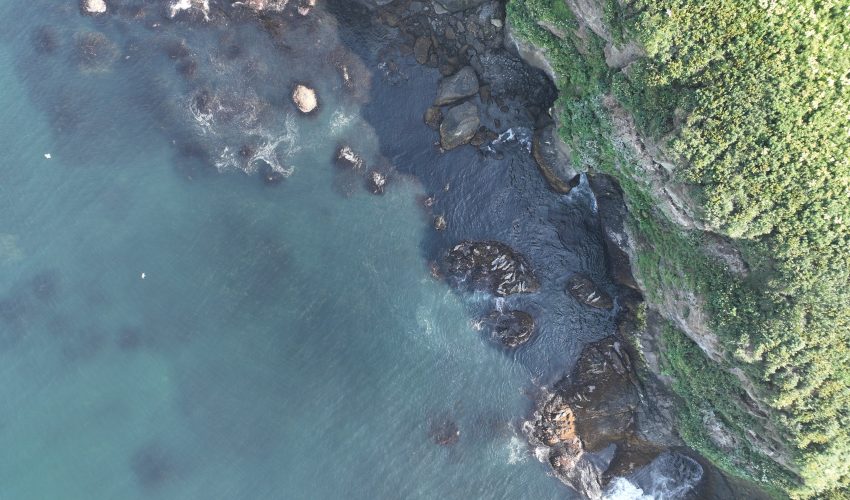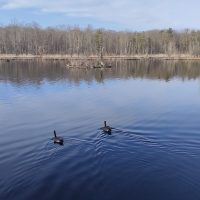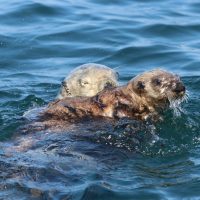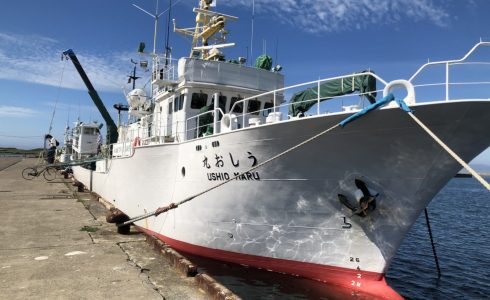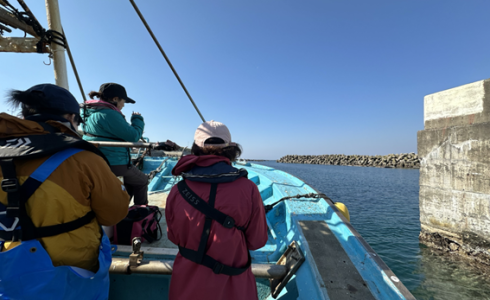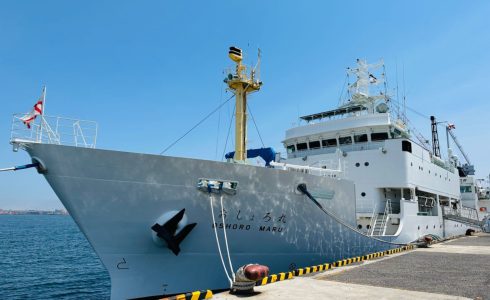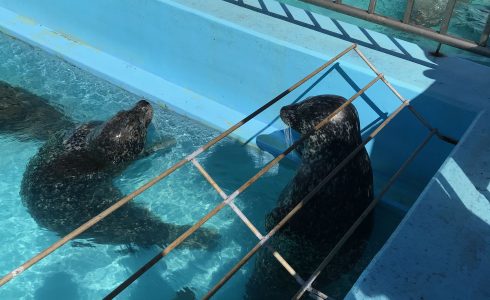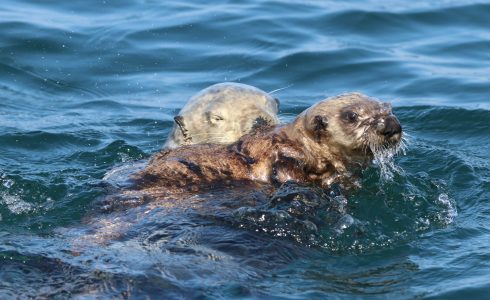Drone Photography of research site coast from 07/14/2023
D3のJがラッコ調査について報告してくれました!
Sea otters (ラッコ), are the smallest of the world’s marine mammals, and the largest members of the weasel family (Mustelidae). Historically, their range spanned all the way from the pacific coast of northern Mexico, up through Alaska and the Aleutian Islands, and back down south along the east coast of Russian and the northern coasts of Hokkaido. In Japan, they were extirpated over 100 years ago, and only recently have begun to recolonize a few areas in eastern Hokkaido over the last few decades.
In fall of 2021, after a particularly warm summer, there was a major red tide harmful algal bloom event of the dinoflagellate Karenia selliformis. This lead to a mass die-off of several marine organisms, including sea urchins and chitons, both of which make up portions of the sea otter diet here in Japan. This red tide event was also highly economically damaging to the fisheries industries of eastern Hokkaido. One of the main purposes of this research is to track the changes in sea otter diet from year to year, especially in how it changed after the red tide event of 2021. The diets of sea otters have been recorded using visual observations of feeding dive events. Another member of the research team, Ms. Natsuki Konno, is tracking the locations of the sea otters (in particular the raft of females and young) and how it is impacted by wind. A raft of sea otters is when a group (typically of females, juveniles, and pups) aggregates and rests together amongst the marine plant beds. The location of the sea otters is determined while performing a census (along a pre-established route) of the survey area. 2023 is the sixth year we will be performing focal following and censuses at this study site. While at the research site, we had the opportunity to see a wide variety of seabird species, along with spotted and harbor seals.
2023 is the second year we will be using drone imaging to look at the relationship between sea otter foraging and kelp/ other seaweed canopy cover from year to year. It has previously been well documented that sea otters in Alaska and California have a strong relationship and association with kelp forest ecosystems, as well as some other marine plants such as seagrasses in those regions. Not only do they provide sea otters habitat to forage and to rest, the sea otters also play an important role in maintaining a healthy kelp forest ecosystem by keeping sea urchin populations under control. East Hokkaido however, is quite a different situation. For one, sea urchins are heavily managed and cultivated in this area as a resource, as is the kelp. There are also a wider variety of different marine plants that form a canopy within this study site. The area seasonally changes from having sargassum be the dominant taller marine plant earlier in the spring/ summer, while surfgrass takes over later in the summer as the sargassum breaks apart and is washed away. All this time, there are patches of kelp around the survey area as well. The goal of this portion of the research will be to see if the seasonal changes in marine plant canopy cover/ composition have an impact on sea otter foraging and resting.
Each year, we have performed these sampling techniques 3 separate times. Once is May/June, once in July, and once in August/September. This July survey lasted from 07/06/2023 until 07/19/2023. We completed a drone survey of all of the areas around the area where we could identify marine plant canopy cover. Over this time, we were able to record a total of 10 feeding dives. We were not able to perform research on every day due to inclimate weather, but were still able to survey on 8 days within the research period.
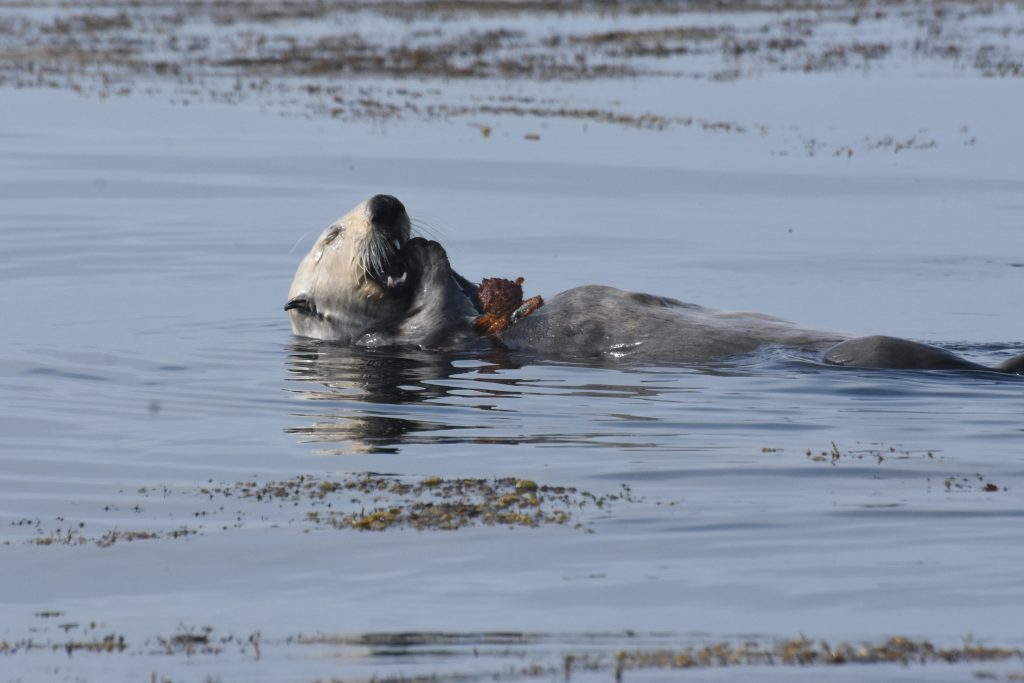 Sea Otter feeding on crab on 07/18/2023
Sea Otter feeding on crab on 07/18/2023

Seal resting atop a small exposed rock on 07/18/2023
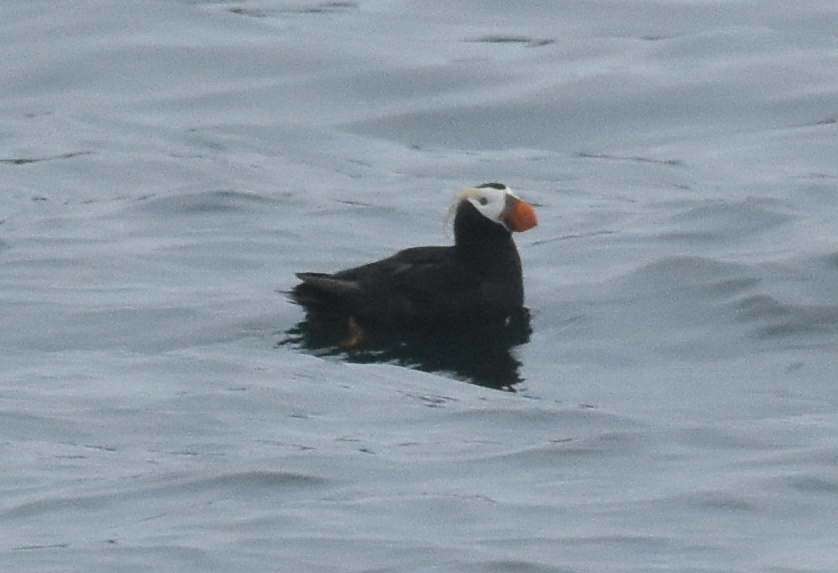
Tufted puffin floating on the ocean on 07/18/2023

